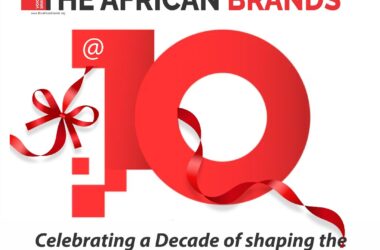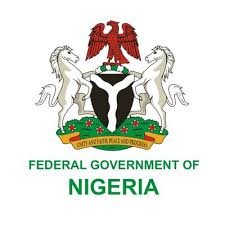By Godwin Anyebe
In today’s competitive marketplace, standing out is more critical than ever. Brands are not just selling products or services; they are crafting experiences and shaping perceptions. Innovative campaigns play a pivotal role in this, driving market success and establishing a brand’s identity in the minds of consumers. As the advertising landscape evolves, it is the brands that embrace creativity and adaptability who set themselves apart and capture consumer loyalty.
The Evolution of Branding
Branding has come a long way from its early days of simple logos and slogans. Modern branding is about creating a narrative that resonates with consumers on a deeper level. This evolution is driven by the need for brands to connect with audiences in a fragmented media environment where traditional advertising methods are often overshadowed by digital and social media.
Innovative campaigns are now the cornerstone of successful branding strategies. These campaigns not only grab attention but also build emotional connections, foster brand loyalty, and drive consumer engagement. By leveraging creativity and technology, brands can create memorable experiences that differentiate them from competitors.
The Power of Creativity
Creativity is at the heart of impactful branding campaigns. In an era where consumers are bombarded with information, a creative campaign can cut through the noise and make a lasting impression. Take, for example, Nike’s “Just Do It” campaign. Launched in 1988, it was a simple yet powerful message that resonated with athletes and non-athletes alike. Its enduring success lies in its ability to inspire and motivate, a testament to the power of creative branding.
Similarly, Dove’s “Real Beauty” campaign redefined beauty standards and sparked a global conversation about self-esteem and authenticity. By showcasing real women of various shapes, sizes, and ethnicities, Dove’s campaign challenged traditional beauty norms and connected with audiences on a personal level. This approach not only boosted Dove’s brand image but also fostered a deeper connection with consumers.
Leveraging Digital and Social Media
The rise of digital and social media has revolutionized how brands execute their campaigns. Social media platforms like Instagram, Twitter, and TikTok offer unprecedented opportunities for engagement and interaction. Brands can now reach audiences in real-time, gather feedback, and adapt their strategies accordingly.
Innovative campaigns often harness the power of these platforms to create viral content that spreads quickly and widely. For instance, Old Spice’s “The Man Your Man Could Smell Like” campaign used humor and a unique storytelling approach to engage viewers. Its success on social media platforms not only increased brand awareness but also led to a significant rise in sales.
Interactive and experiential campaigns are also gaining traction. Brands are using augmented reality (AR), virtual reality (VR), and gamification to create immersive experiences that captivate audiences. For example, IKEA’s AR app allows customers to visualize how furniture will look in their homes before making a purchase. This innovative use of technology enhances the shopping experience and drives consumer engagement.
Personalization and Data-Driven Strategies
Personalization is another key trend in modern branding campaigns. With access to vast amounts of consumer data, brands can tailor their messages and offers to individual preferences and behaviors. This data-driven approach allows for more targeted and relevant campaigns that resonate with specific audience segments.
For example, Netflix uses data to recommend shows and movies based on viewing history, creating a personalized experience for each user. This not only enhances customer satisfaction but also reinforces Netflix’s brand as a provider of tailored entertainment solutions.
Brands are also using data to measure the effectiveness of their campaigns and make data-driven decisions. By analyzing metrics such as engagement rates, conversion rates, and customer feedback, brands can refine their strategies and optimize their campaigns for better results.
The Role of Purpose-Driven Branding
In recent years, purpose-driven branding has gained prominence. Consumers are increasingly looking for brands that align with their values and contribute to social and environmental causes. Campaigns that highlight a brand’s commitment to making a positive impact can enhance its reputation and build stronger connections with socially conscious consumers.
Patagonia, for instance, has built its brand around environmental sustainability. Its “Don’t Buy This Jacket” campaign, which encouraged consumers to think twice before making a purchase, exemplifies Patagonia’s dedication to reducing waste and promoting responsible consumption. This approach has not only reinforced Patagonia’s brand values but also fostered a loyal customer base that shares its commitment to environmental stewardship.
Challenges and Opportunities
While innovative campaigns offer numerous benefits, they also come with challenges. The rapid pace of change in digital and social media requires brands to stay agile and continuously adapt their strategies. Additionally, the increasing complexity of data privacy regulations necessitates careful handling of consumer information.
Despite these challenges, the opportunities for brands to make an impact are vast. By embracing creativity, leveraging technology, and staying attuned to consumer values, brands can create campaigns that resonate deeply and drive long-term success.
While giving his insight on this issue, the President of the Advertisers Association of Nigeria (ADVAN), Osamede Uwubanmwen said;
“in today’s highly competitive market landscape, innovative advertising campaigns are pivotal in shaping a brand’s success. As the president of the Advertisers Association of Nigeria (ADVAN), I have witnessed firsthand how creativity and strategic thinking in advertising can significantly influence consumer perception and drive market success.
According to him, “campaigns help in establishing a unique brand identity. By leveraging fresh ideas and unconventional approaches, brands can differentiate themselves from competitors. This differentiation is crucial in a crowded market where consumers are bombarded with numerous choices. A well-crafted campaign not only highlights the brand’s core values but also creates a memorable image that resonates with the target audience.”
He stressed that, “engaging campaigns are those that go beyond traditional advertising methods. Interactive elements, personalized content, and immersive experiences can capture consumer attention more effectively. For example, campaigns that utilize digital platforms, such as social media or augmented reality, often see higher engagement rates. This level of interaction fosters a deeper connection between the brand and its audience, leading to increased brand loyalty.”
Continuing, he said; “innovative campaigns can also drive market penetration by tapping into new and diverse consumer segments. By analyzing market trends and understanding evolving consumer preferences, brands can craft campaigns that appeal to untapped demographics. This strategic approach not only expands the brand’s reach but also enhances its relevance in the market.”
He pointed out that, “ceativity in advertising often generates buzz, which can amplify a brand’s visibility. Viral campaigns, for instance, leverage social media to reach a broader audience quickly. The ripple effect of a successful viral campaign can lead to heightened brand awareness and increased consumer interest, translating to higher sales and market share.”
“The impact of innovative campaigns is also reflected in measurable outcomes. Metrics such as brand recall, customer engagement, and return on investment (ROI) provide valuable insights into the campaign’s effectiveness. Brands must continuously assess these metrics and adapt their strategies to ensure sustained success and relevance.” He noted.
Also speaking on this issue, a Brands and Marketing Analyst, Samuel Ajayi said; “In the dynamic realm of branding and marketing, innovative campaigns are increasingly recognized as a cornerstone of market success. As a Brands and Marketing Analyst, I have observed that the effectiveness of a brand’s strategy hinges significantly on its ability to leverage creativity and innovation in its campaigns.”
According to him, “innovative campaigns play a critical role in differentiating a brand from its competitors. In a market saturated with similar products and services, standing out becomes a challenge. Innovative approaches, whether through unique storytelling, cutting-edge technology, or unconventional media channels, help brands carve out a distinctive identity. This differentiation is essential for capturing consumer attention and fostering brand loyalty.”
He noted that, “engaging consumers is crucial for building lasting relationships. Innovative campaigns often employ interactive and immersive techniques that not only capture attention but also encourage active participation.”
For instance, he continued, “campaigns utilizing augmented reality or gamification create memorable experiences that resonate with consumers on a deeper level. This heightened engagement translates into a stronger emotional connection with the brand.”
“campaigns are instrumental in driving growth and market expansion. By addressing emerging trends and leveraging new media, brands can reach previously untapped demographics and geographic regions. An innovative campaign that aligns with consumer interests and preferences can accelerate market penetration and establish a brand’s presence in new territories.” He added.
Further speaking “the success of an innovative campaign is often reflected in key performance indicators such as return on investment (ROI) and brand equity. Effective campaigns not only generate immediate sales but also contribute to long-term brand value. By measuring metrics such as brand recall, consumer sentiment, and conversion rates, brands can assess the impact of their campaigns and make data-driven decisions to optimize future strategies.”
“The ability to adapt to changing market conditions is another advantage of innovative campaigns. In an ever-evolving landscape, brands must be agile and responsive to shifts in consumer behavior and market trends. Innovative campaigns allow brands to stay relevant by addressing current issues, trends, and opportunities, ensuring continued resonance with their target audience.” He added.
In summary, innovative campaigns are pivotal in achieving branding brilliance and market success. They enable brands to differentiate themselves, enhance consumer engagement, drive growth, maximize ROI, and adapt to market changes. As the branding landscape continues to evolve, embracing creativity and innovation will remain essential for brands aiming to secure a competitive edge and foster lasting success.









